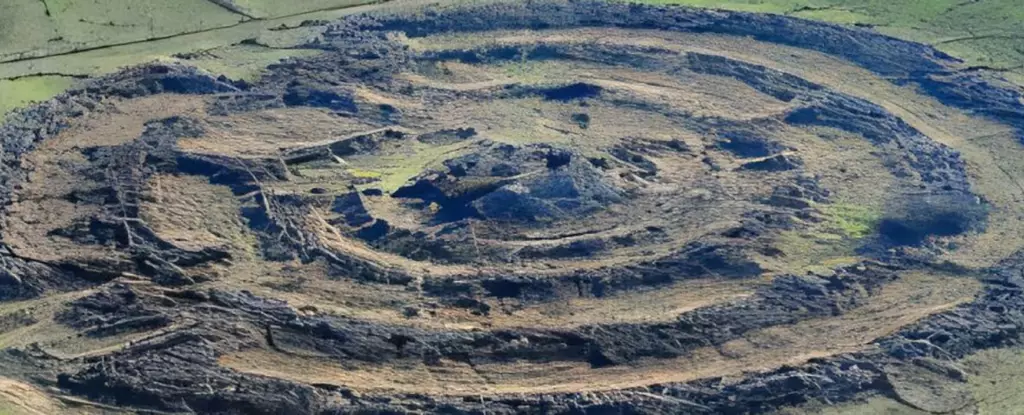Rujm el-Hiri, also known as the ‘Wheel of Ghosts,’ is an archaeological wonder located on the Golan Heights in southwest Syria. This impressive megalithic site has fascinated historians and archaeologists for generations, primarily due to its once-thought function as an astronomical observatory. The arrangement of its stones appeared to align with celestial bodies, leading to theories that ancient civilizations utilized it for cosmic observations. However, recent research has turned these long-held assumptions on their head, raising profound questions about the true purpose of this ancient site.
A groundbreaking study by researchers from Tel Aviv University and Ben-Gurion University of the Negev has applied cutting-edge scientific techniques to the investigation of Rujm el-Hiri. By employing geomagnetic analysis, tectonic reconstruction, and remote sensing, the researchers have gathered evidence that significantly challenges prior assumptions regarding the site’s alignment with the night sky. Their investigation revealed that the monument has undergone substantial shifts in its position over millennia, indicating that it has not always been properly aligned with celestial features as previously believed. This discovery opens up a dialogue about the monument’s original intent, suggesting a more complicated history.
The study outlines how the geological structure of the Rujm el-Hiri region has evolved over time, influenced by tectonic movements that have caused the monument to rotate and shift. The research team determined that Rujm el-Hiri has counterclockwise rotatory shifts away from its initial position, with an estimated displacement of several tens of meters. Such tectonic activity fundamentally alters our understanding of the site, stripping away its mysterious overlay of cosmic alignment and compelling us to consider alternative functions these ancient structures may have held in their original contexts.
Dating back to around 4500 BCE, the Rujm el-Hiri site demonstrates the ingenuity of ancient societies. The researchers hypothesize that construction began millennia ago and may have evolved into a multifaceted site through continuous rebuilding and expansion, stretching into the Bronze Age (approximately 3600 to 2300 BCE). The central cairn, surrounded by concentric stone circles spanning nearly 492 feet, might have served not only as a burial site but also as a communal gathering place or a stronghold, reflecting its complexity and adaptability over time. This extensive reuse and modification signal a rich cultural tapestry intertwined with the dynamics of life in ancient times.
Rujm el-Hiri’s complexity represents a larger pattern observed in many archaeological sites: the layering of histories. As the researchers note, structures in the region often underwent significant transformations long after their initial creation, leading to a patchwork of features that meld together various epochs of human activity. This information provides fertile ground for comparative studies with other megalithic structures worldwide, enhancing our understanding of ancient civilizations’ architectural practices.
The successful amalgamation of scientific methods in this research highlights the potential for future advancements in archaeological studies. By utilizing satellite imagery and geophysical techniques, researchers could uncover hidden features and anomalies in landscapes that remain obscured from ground-level observation. Furthermore, the study’s implications extend toward artificial intelligence, as models could be trained to detect similar human-made structures, thereby allowing for a more expansive exploration of our shared human heritage.
In essence, the investigation of Rujm el-Hiri leads us to reconsider our perceptions of ancient monuments and their functionalities. This study underlines the dynamic relationship between culture and landscape, illustrating how tectonic shifts and human activity have intricately shaped historical sites. As we further unravel the layers of Rujm el-Hiri and similar structures throughout the globe, we gain invaluable insights into the civilizations that once thrived, inspiring both curiosity and respect for our ancestors’ achievements. The next phase of archaeological research may unearth unprecedented revelations, continuing to reveal the complex tapestries of human history that exist in places like the ‘Wheel of Ghosts.’


Leave a Reply